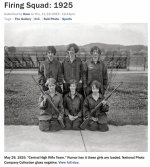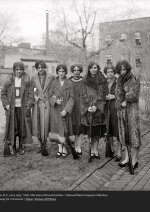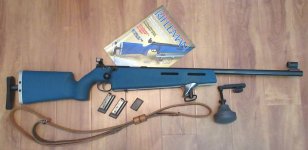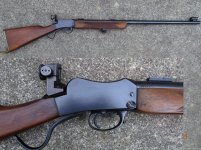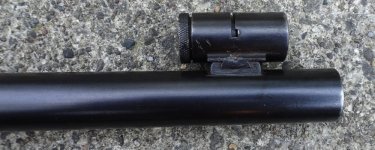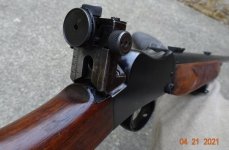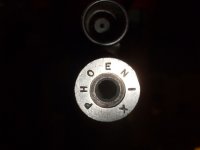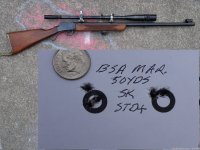These are beautiful guns and collections with some great back stories. Thanks all. Brings back memories.
I shot the NRA Junior Marksmanship Program when at summer camp from 1960-63. We always shot singles even if the gun was a repeater. This required regaining NPOA (natural point of aim) for each shot after working the bolt and hand inserting the next round. As well, each of the 10 bulls required a slightly different orientation for perfect alignment.
We first used little Remington trainers with open sights, and once we proved ourselves we moved up to Winchester Model 52’s with peep sights. In all positions we used a standard one-point military arm sling.
With the Winchesters shooting 10 rounds, all centered, I and a few other boys (ages 11-14) could make one hole that was about .28 in diameter at 50’, prone. I could do almost as well from a low cross-legged sitting position, all shots breaking the .22” center ring. We moved on to kneeling and then standing, but those Winchesters were sure heavy for a 12-y/o standing.
In competition we had a center target we could use as a sighter or to warm up a cold bore. After that, each of 10 targets around the perimeter got one round each so they could be scored accurately. 98, 99 and perfect 100’s were common from prone. Standing was usually around 90 for the winner.
Our coach was a (former) Marine, so we learned to shoot military style. We cleaned the range guns and the range (no personal guns). Shot standard velocity Remington ammo. I shot Expert early in the summer I turned 13.
I still have the Mossberg 144LS my dad bought me when I left summer camp. Great rifle, but it never quite equaled the consistency of those Winchester 52’s at summer camp.
About 20 years ago I discovered the Appleseed marksmanship program, which at the time was primarily military .30 cal. training. I fit right in and became an adjunct instructor for a few years. I shot “Rifleman” on my first outing with a FAL, primarily because of my training at summer camp. We switched to .22’s for easier training at a lower cost about 15 years ago. Never saw any of these wonderful target rifles at an Appleseed shoot.
One last thing—having worked for Barnes Bullets/Ammunition where we constantly tested accuracy of bullets and ammunition for QC—I take all groups <10 rounds with a grain of salt. Real accuracy of the shooter, the equipment and the ammo need 10 rounds to be significant. It is surprising to see what happens to a neat 3-shot cloverleaf when seven more rounds are added. For the shooter who can deliver all 10 in a little over a quarter inch, the 10 individual bulls with one shot each become a much better “talking target”.




